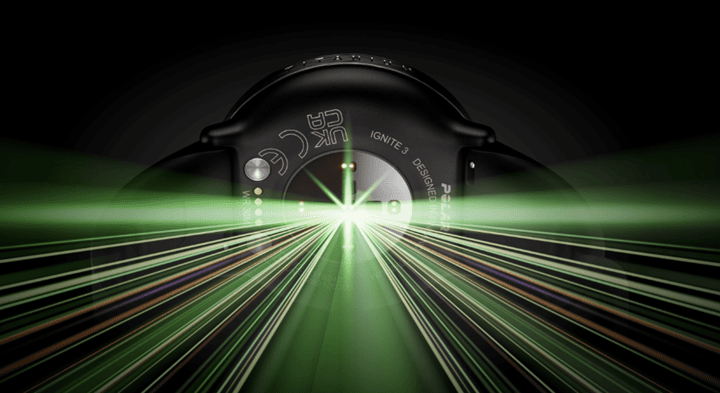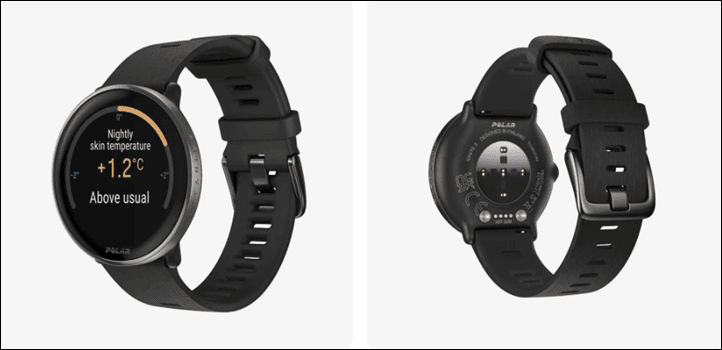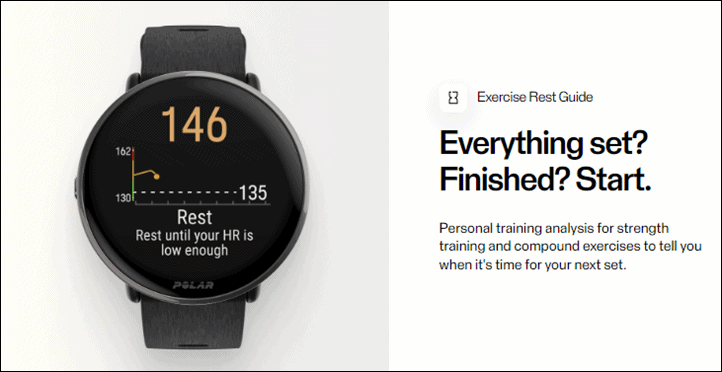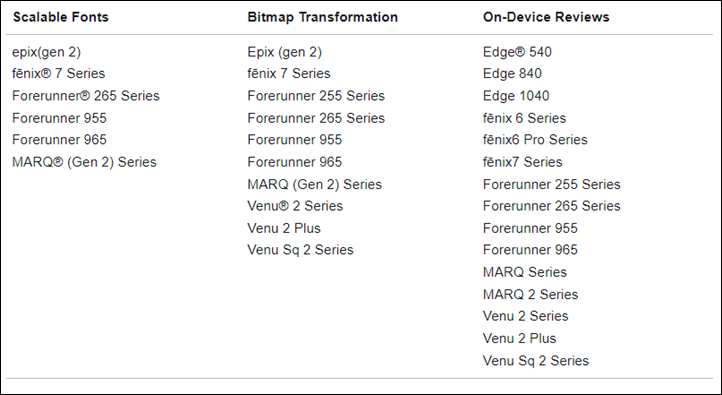Last call for sports tech deals before New Year!! Most of these are still live till Dec 31st. The Garmin Fenix 8 is $250 off to $749, (even the Fenix 8 Pro is $100 off!), the Garmin Edge 850 is $110 off, Apple Watch Ultra 3 is on sale, the Garmin inReach Mini 2 is $249, the GoPro Hero 13 Black, DJI NEO, and a ton of other brands/deals, including Wahoo, Oura, Whoop, Polar, Samsung, Google, and more than 100 sports tech deals here!
I’m DC RAINMAKER…

I swim, bike and run. Then, I come here and write about my adventures. It’s as simple as that. Most of the time. If you’re new around these parts, here’s the long version of my story.

You'll support the site, and get ad-free DCR! Plus, you'll be more awesome. Click above for all the details. Oh, and you can sign-up for the newsletter here!
Here’s how to save!
Wanna save some cash and support the site? These companies help support the site! With Backcountry.com or Competitive Cyclist with either the coupon code DCRAINMAKER for first time users saving 15% on applicable products.
You can also pick-up tons of gear at REI via these links, which is a long-time supporter as well:Alternatively, for everything else on the planet, simply buy your goods from Amazon via the link below and I get a tiny bit back as an Amazon Associate. No cost to you, easy as pie!
You can use the above link for any Amazon country and it (should) automatically redirect to your local Amazon site.
While I don't partner with many companies, there's a few that I love, and support the site. Full details!

Want to compare the features of each product, down to the nitty-gritty? No problem, the product comparison data is constantly updated with new products and new features added to old products!

Wanna create comparison chart graphs just like I do for GPS, heart rate, power meters and more? No problem, here's the platform I use - you can too!

Think my written reviews are deep? You should check out my videos. I take things to a whole new level of interactive depth!

Smart Trainers Buyers Guide: Looking at a smart trainer this winter? I cover all the units to buy (and avoid) for indoor training. The good, the bad, and the ugly.
-
Check out my weekly podcast - with DesFit, which is packed with both gadget and non-gadget goodness!

Get all your awesome DC Rainmaker gear here!
FAQ’s
I have built an extensive list of my most frequently asked questions. Below are the most popular.
- Do you have a privacy policy posted?
- Why haven’t you yet released a review for XYZ product you mentioned months ago?
- Will you test our product before release?
- Are you willing to review or test beta products?
- Which trainer should I buy?
- Which GPS watch should I buy?
- I’m headed to Paris – what do you recommend for training or sightseeing?
- I’m headed to Washington DC – what do you recommend for training?
- I’m from out of the country and will be visiting the US, what’s the best triathlon shop in city XYZ?
- What kind of camera do you use?
-
5 Easy Steps To The Site
In Depth Product Reviews
You probably stumbled upon here looking for a review of a sports gadget. If you’re trying to decide which unit to buy – check out my in-depth reviews section. Some reviews are over 60 pages long when printed out, with hundreds of photos! I aim to leave no stone unturned.
Read My Sports Gadget Recommendations.
Here’s my most recent GPS watch guide here, and cycling GPS computers here. Plus there are smart trainers here, all in these guides cover almost every category of sports gadgets out there. Looking for the equipment I use day-to-day? I also just put together my complete ‘Gear I Use’ equipment list, from swim to bike to run and everything in between (plus a few extra things). And to compliment that, here’s The Girl’s (my wife’s) list. Enjoy, and thanks for stopping by!
Have some fun in the travel section.
I travel a fair bit, both for work and for fun. Here’s a bunch of random trip reports and daily trip-logs that I’ve put together and posted. I’ve sorted it all by world geography, in an attempt to make it easy to figure out where I’ve been.
My Photography Gear: The Cameras/Drones/Action Cams I Use Daily
The most common question I receive outside of the “what’s the best GPS watch for me” variant, are photography-esq based. So in efforts to combat the amount of emails I need to sort through on a daily basis, I’ve complied this “My Photography Gear” post for your curious minds (including drones & action cams!)! It’s a nice break from the day-to-day sports-tech talk, and I hope you get something out of it!
The Swim/Bike/Run Gear I Use List
Many readers stumble into my website in search of information on the latest and greatest sports tech products. But at the end of the day, you might just be wondering “What does Ray use when not testing new products?”. So here is the most up to date list of products I like and fit the bill for me and my training needs best! DC Rainmaker 2024 swim, bike, run, and general gear list. But wait, are you a female and feel like these things might not apply to you? If that’s the case (but certainly not saying my choices aren’t good for women), and you just want to see a different gear junkies “picks”, check out The Girl’s Gear Guide too.
























Are on device reviews slated for the EPIX2? It isn’t on the list but the Fenix7 is. And they are both on the other lists.
So are we finally seeing the definitive divergence between the 955 and 945LTE? It’s beginning to look like the 945LTE is not going to get System 6.
Looks like it. I was hoping they’d at least let us adjust data screens from the Connect app, but that never happened.
Hi Ray,
The “Work-Rest Guide Training Analysis” is not new – Polar did have this feature on the old FT60 and FT80 way back in 2007 – I had the FT80 and it would tell me when I was ready for my next set
Thanks,
Munz
IMO Polar has 2 (or more) different timelines realistically in their devices/features history “pre-Vantage” and “post-Vantage”. Polar effectively (with the exception of m430) pretty much took 3 years off releasing anything (while trying to figure out the new chipset integrations on what would become Vantage), then became “Polar 2.0, Vantage timeline” (Kind of like Star Trek reboots, LOL). “Whatever happened before, no longer exists in Polar-verse, LOL”. That’s the feeling I have had for years anyhow, basically they changed the core hardware, had to redevelop the entire OS around the new hardware stacks, seem to have hired a bunch of devs for the new OS dev that had no idea how good, stable, reliable, Polar was known for in past history, and advanced the “spec sheet” while drawing back in the quality, reliability, stability, and “it just works and works wellness” of their products.
Except the m430, that was “Spock” in Star Trek terms, making guest appearances across all timelines and such, LOL.
Just my take on it in general, really there are 3.5 eras:
Era 1 – “independent device” era (pre-internet sync platforms, when you just used a spreadsheet/paper to track your post-workout data) (and I could design custom watch faces for at least one of my models, that was fun, although the audio-sync made that quite challenging, LOL!)
Era 2 – The PPersonT/PProT era (when things really worked great, and you could have manual input, synced input, and modifiable data (and extra data, blood pressure, temperature, and dozens of other “hand-entered” metrics in their local and web platforms… the good-old-days…)
Era 2.5 the Polar Flow with still reliable devices era – pre-Flow devices and their data sync kinda worked still, the still-supported devices were still great, the platform much less so from a data perspective (prettier, but less data metrics actually supported, and can’t edit/crop workouts).
Era 3 – The post Vantage era, when all previous eras were forsaken in favor of “more hardware” specs color, touchscreens, less accurate OHRs and GPS (compared to the least era 2.0/2.5 devices), but less reliable software and muddling/loss of features (which mostly have now found their way back finally) from the last 2.5 device (v800).
Anyhow, current Polar marketing, management, “public facing” entities, seem to REALLY want everyone to forget the 2.0/2.5 era and before, ever existed. I think it’s because they (SOMEONE there at least) know, their “things” today, aren’t as good (in relative terms) to their devices “then” and it’s a spot of contention that they have yet to get back to that “it just works and does it’s job well/perfectly” quality they used to be praised for (their biggest 2 selling points in the old days were “we do what we do, better than anyone” and “our devices just work, period”.
Garmin couldn’t claim either of those as better than Polar through the late 201x years, but now it’s flipped, and Garmin is “just as reliable (both are a bit flakey now, instead of that just being the knock against Garmin”) in my personal usage/experience of both, and has MUCH better GPS and similar OHR accuracy, but has a lot more to offer as well than similar market-level Polar devices.
Not a good place for Polar to be in, but hey, at least their low-midgrade watch has a Ti bezel option now.
(I’m off to go use my v800 with my Polar Balance scale to automatically record my weight, check the current ambient temperature from my wrist, record my current waypoint and altitude, setup some custom intervals, setup a race pace to try for my training run, see and skip a song on spotify from my watch, get my phone notifications (not while working out sadly, that only came post-v800 and yeah, it’s partial, but enough to get the idea most of the time), record running cadence from the wrist, or sync my Stryd and get accurate power, speed, and cadence recorded and displayed on the watch via fully customizable screen/data views, go for a swim with live HR reporting from my chest strap while swimming (and accurate swim stroke tracking and open-water GPS recording that doesn’t fail halfway through a workout, then maybe sync up some Strava segments to my v800 and later start a video recording remotely on my GoPro from across the room so I am ready to start recording, all from my 7-year-old watch…) Polar today, doesn’t want people to remember that a LONG list of their “latest features” the past 5 years or so, was re-releasing things they’d already done in the “before times”.
(And yes, I’m NEVER going to forget, or give-up on, those “before” times, in hopes that SOMEHOW Polar today, can find their way BACK to the “it just works” feel of those days, while progressing the platform forward in meaningful ways, because I don’t know when to give up, LOL).
Ray, if you’re ever looking for an assistant/ghostwriter ^^^^^
Interesting take on this. I’d say it a bit more simply: seems like Polar has always been a health research first company. They’ve gotten distracted chasing high end hardware and losing to Garmin for years. Now maybe trying to switch back to health/”algorithm” focus again maybe? No new “flagship” device in almost 3 years, licensing their algorithms, and I thought they just had some layoffs. Tough sledding for Polar, I hope they can figure it out. Hard to develop new algorithms long term without adding new sensors (aka new devices), curious what they release next. Personally I’d love to see them go to 3 year flagship hardware cycle, but support and develop every product with quarterly or frequent updates. Best of all worlds, if the business model is there.
This is a great article on its own.
Thank you for this comment! Im 100% with you.
Polar really dont know what to do. Theyre not best at gps tracking or ohr. They dont even have best hr underwater (they killed their own tech – 5khz transmission, real time hr underwater!). So what are they the best?
My opinion: selling soft updates for the price of new watch. Shortest update time of existing models (even flagship models). Bringing back functions from previous watches and advertising it as great and new functions.
They cut explore function, clubs, groups from Polar Flow. They cut off “feed” option and comments. They cut off biking computers (still selling m460 but dont support with new updates!).
Worst thing for me is… almost all new functions which work on v800 and vantage v2 is better on v800! Navigation – v800 got POI, automatic change direction (not with menus like on v2).
Strava segments – you have list on v800, during activity info about 2 upcoming segments and when you pause segment it appear next time (on v2 canceling “closes” this segment for this activity), you had hr during racing with strava segment
Race pace – on v800 you had “average time to arrive on time” real time changing with our speed, that was really a handy function but hey! On v2 you have dude running or cycling xD.
And battery time… Coros have weeks of battery time, Garmin and suunto have weeks of battery time. Polar only days.
Big Polar fan here but not fanatic. I see what they did to my beloved brand. I wait till end of this year to make a switch, unfortunately.
Thank you for all of this John. I’m wondering what you might switch to? I might follow suit, as I’ve grown tired of Polar with how they have been “acting”.
Good reviews and news as always!
Thx
There’s a typo in the article. In the polar section near the bottom discussing the interval and hiit training . Interval is spelled internal
Thanks for the nice coverage of the Polar update. A few of us still in the polar camp, I know I appreciate the coverage. 👍
Typo: “what it does is during internal or HIIT workouts” should be interval. :-)
Thanks!
Hi Ray! On a Fenix 6x (and probably many other sportwatches as well), you could easily create a HIIT-session, there the next step in the interval session will not start before your HR drops below a certain value.
How will Polar’s new interval differs from that?